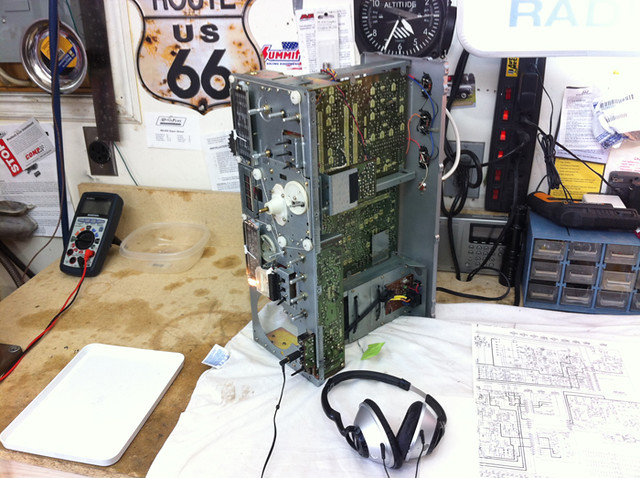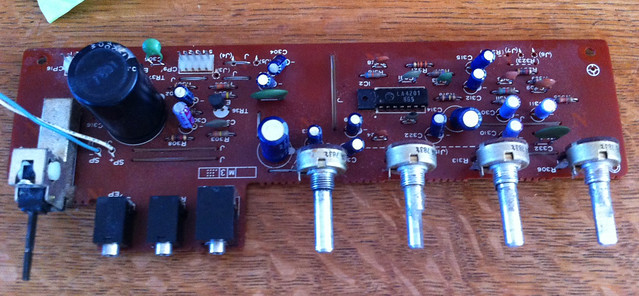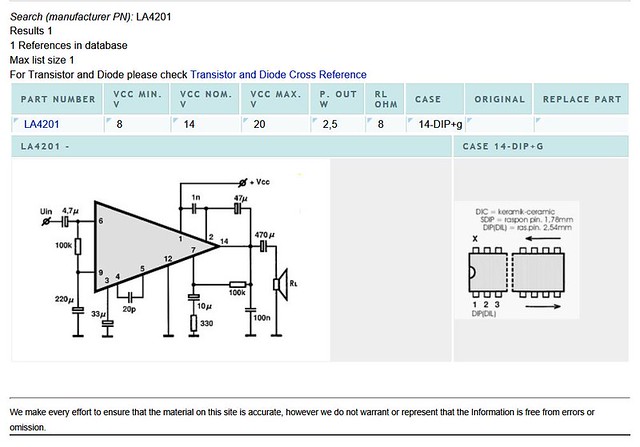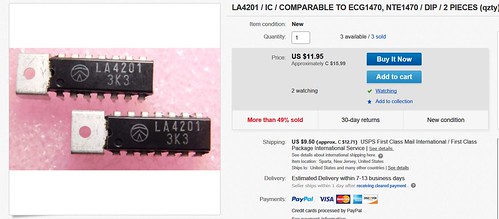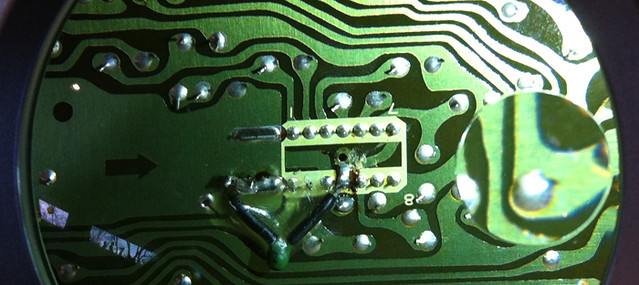Hello Electro Tech,
First post,
Just recently acquired a 1980 vintage Panasonic RF4800 analog SW radio. Opened it up, replaced a burned out lamp with an Led, and all was well with the unit working very well...until today. I'd decided since the unit was dual power (AC/12v int/ext bat), that I would try it on battery power to see if I could reduce the RF noise from the power supply transformer, which had previously been changed to a large wall adapter mounted inside on the place where the old transformer mounted.. Guess what? I got the bat DC polarity backwards, and upon turning the radio on I instantly heard a little pop through the speaker and realized what had happened. Returning to AC power, now I have no audio. Lamps and the digital display still light. Slight burnt smell present. Opening it up I seen no sign of burning on the Power or AF amp board. The power in board has no visible fuse. I have voltage right out to the power amp board plug, and out into the board, but I don't have near enough electronic knowledge to know where to trace further.
Question;
What would have gave way on the power amp board ? Is there a built in component that would fail on reverse polarity to protect the rest of the board/radio? f I can figure that out, I have the capability to remove the board, remove and replace the component. Failing that, It goes to someone qualified to repair it...but I'd like to learn. I just hope I haven't really screwed this sweet vintage radio up.
Any help or thoughts greatly appreciated,
Cheers, and thanks,
Mark
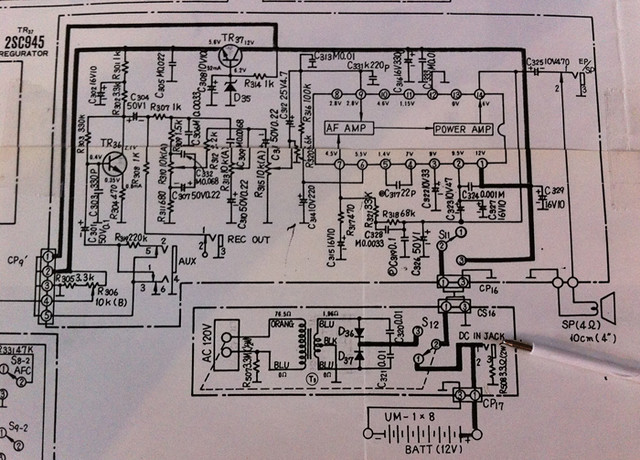
Pen shows the DC in point.
First post,
Just recently acquired a 1980 vintage Panasonic RF4800 analog SW radio. Opened it up, replaced a burned out lamp with an Led, and all was well with the unit working very well...until today. I'd decided since the unit was dual power (AC/12v int/ext bat), that I would try it on battery power to see if I could reduce the RF noise from the power supply transformer, which had previously been changed to a large wall adapter mounted inside on the place where the old transformer mounted.. Guess what? I got the bat DC polarity backwards, and upon turning the radio on I instantly heard a little pop through the speaker and realized what had happened. Returning to AC power, now I have no audio. Lamps and the digital display still light. Slight burnt smell present. Opening it up I seen no sign of burning on the Power or AF amp board. The power in board has no visible fuse. I have voltage right out to the power amp board plug, and out into the board, but I don't have near enough electronic knowledge to know where to trace further.
Question;
What would have gave way on the power amp board ? Is there a built in component that would fail on reverse polarity to protect the rest of the board/radio? f I can figure that out, I have the capability to remove the board, remove and replace the component. Failing that, It goes to someone qualified to repair it...but I'd like to learn. I just hope I haven't really screwed this sweet vintage radio up.
Any help or thoughts greatly appreciated,
Cheers, and thanks,
Mark

Pen shows the DC in point.

